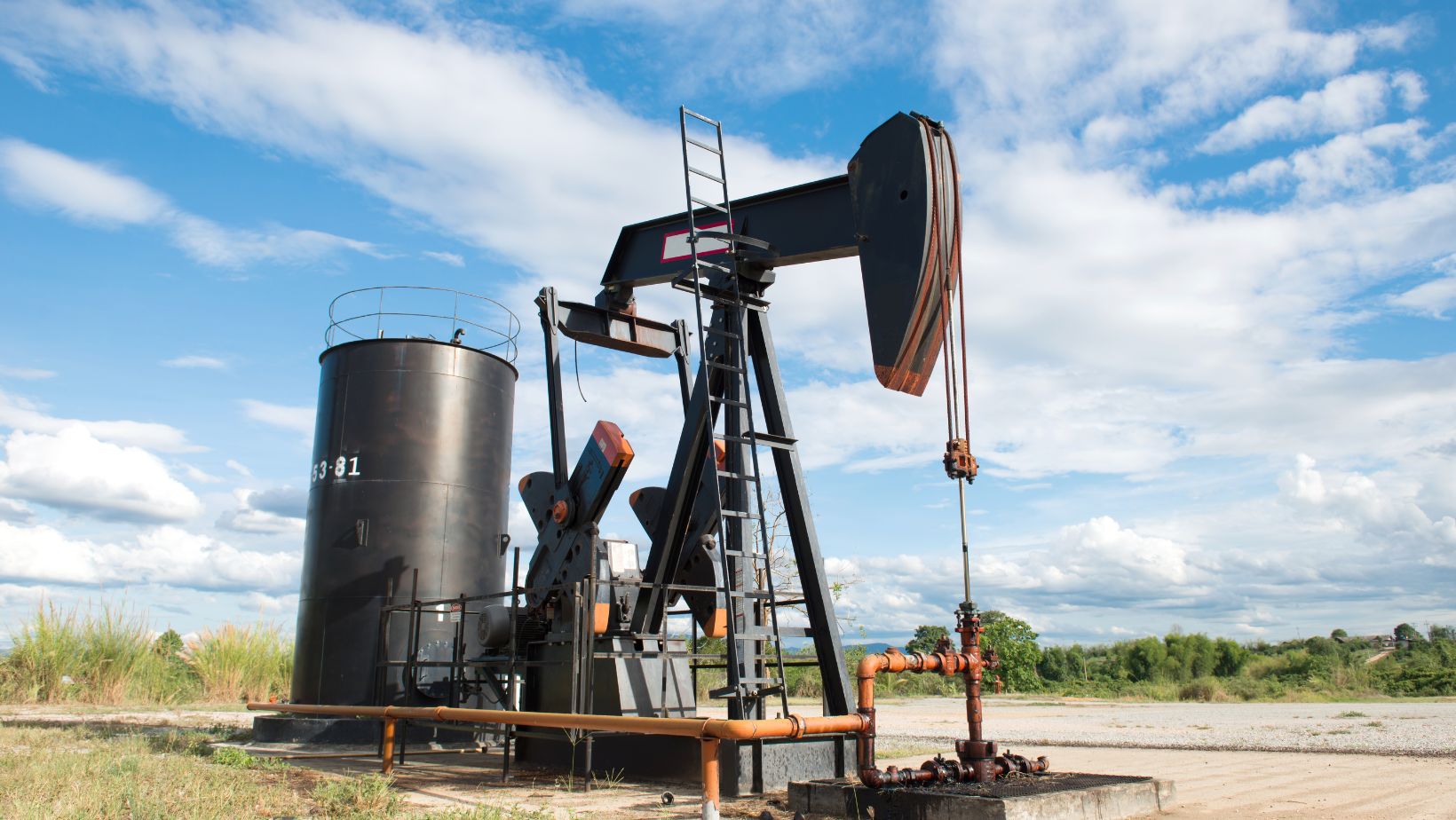
From Agriculture to Energy: Exploring the Versatility of Industrial Pumps
 In a complex web of modern infrastructure, one technology often remains the unsung hero: the industrial pump. These devices are essential for moving liquids and gases throughout innumerable systems, impacting every facet of our lives, from delivering clean drinking water to functioning our vehicles. This article delves into how industrial pumps have become indispensable to societal advancement.
In a complex web of modern infrastructure, one technology often remains the unsung hero: the industrial pump. These devices are essential for moving liquids and gases throughout innumerable systems, impacting every facet of our lives, from delivering clean drinking water to functioning our vehicles. This article delves into how industrial pumps have become indispensable to societal advancement.
The History and Development of Pumps
Pumps were first used for irrigation and water removal by ancient societies like the Romans and Egyptians, who are credited with pump technology development. Through the ages, mechanical innovation spurred the development of more sophisticated pumps, notably during the Industrial Revolution, where steam-powered pumps played a pivotal role in mining and manufacturing. The progression from manual pumps to automated systems represents not just a technological leap but a fundamental shift in how humanity harnesses and directs the power of fluids.
Modern industrial pumps have become highly efficient with the fusion of advanced materials like stainless steel and specialized polymers, which resist corrosion and wear. Furthermore, integrating electronic controls has allowed for more precise flow management, optimizing performance in complex industrial settings. The development of pumps is a testament to human ingenuity and our ceaseless pursuit of progress, embodying the spirit of engineering triumph over the physical challenges posed by moving and managing liquids and gases.
Types of Industrial Pumps and Their Applications
Industrial pumps are classified based on their operational mechanisms and the nature of their applications. Centrifugal pumps, for example, harness centrifugal force to move liquid and are commonly used in municipal water supply systems, residential buildings, and fire protection systems. Positive displacement pumps, including gear, peristaltic, and piston pumps, maintain a consistent flow rate and are crucial in industries requiring precise volumetric flow, such as in the metering of chemicals and oil and gas production.
Furthermore, specialty pumps like diaphragm and vacuum pumps are tailored to specific operations within the chemical processing, pharmaceutical, and medical industries, managing everything from transferring sensitive fluids to providing the essential operation of life-support devices. These diverse types of pumps showcase the industry’s ability to adapt and tailor solutions to various challenges, always aiming to enhance efficiency and reliability in the face of demanding industrial requirements.
The Critical Role of Pumps in Water Infrastructure
The ubiquity of pumps within our water infrastructure cannot be overstated. In agriculture, pumps are:
- The backbone of irrigation systems.
- Enabling the precise distribution of water to vast farmlands.
- Thus supporting the production of the food we consume.
Municipal water systems utilize an extensive network of pumps to deliver potable water to homes, maintain pressure, and manage sewage and stormwater. In contrast, wastewater treatment facilities deploy sophisticated pump setups to handle and treat sewage effectively, safeguarding public health and the environment.
These pumps are not just part of a functional necessity; they represent the lifeblood of sustainable water management. As populations grow and urban areas expand, the need for effective pumping solutions becomes more critical. Engineers and city planners are constantly seeking improvements in pump technology and system design to cope with the increasing demands and to ensure a resilient infrastructure capable of withstanding the challenges posed by climate change and urbanization.
Pumps in the Energy Sector
Energy production and distribution is home to some of the most demanding applications for industrial pumps. These workhorses move crude oil, natural gas, and biofuels through vast pipeline networks. They also play a crucial role in power plants, where cooling water pumps regulate the temperature in nuclear reactors, and condensate pumps cycle steam back into water for thermal power stations.

In recent years, sustainability efforts have seen pumps becoming vital components of renewable energy systems. For example, pump technology plays a significant role in generating and storing energy in hydropower plants. Pumped-storage systems balance electricity from intermittent renewable sources like solar and wind.
Advancements in Pump Efficiency and Environmental Impact
Pump efficiency has become a critical focus in the global effort to combat climate change. Innovations in pump design now prioritize energy conservation and resource optimization. It reduces operational costs and lowers the carbon footprint of systems that rely on pumps. Sensor-equipped and Internet of Things (IoT)–connected innovative pump technologies offer real-time data for predictive maintenance, further cutting waste and extending the life of infrastructure.
An apt example of this zeitgeist is the current interest in developing pumps that can adjust their operation dynamically based on system demand, effectively conserving energy without compromising performance. These eco-friendly technologies are essential in constructing a more sustainable industrial landscape. A prime source of insight into these advances is the U.S. Department of Energy, which showcases new pump technologies aiming to conserve energy and protect the environment.
The Economic Impact of Pump Technology
Pump technology has a vast economic footprint, not only because of its ubiquitous use across various industries but also due to its influence on job creation and trade. By facilitating efficient processes and creating a market for expertise in design, maintenance, and operations, pump technology stimulates employment and contributes to the gross domestic product (GDP). Moreover, the international trade of pumps and pump parts is a testament to the global interconnectedness of industries and pump technology’s central role.
The financial implications of investing in modern pump systems are complex. The initial cost of implementation may be high. Still, the long-term benefits of reduced operational costs and increased efficiency make it worthwhile, especially considering the potential savings from averted downtime and maintenance issues. The interplay between the cost of technology and economic output thus guides much of the decision-making in allocating and designing industrial pumps.
Pumps in Manufacturing and Industrial Processes
The manufacturing sector, with its diverse array of processes and products, relies heavily on pumps for both the movement of raw materials and the maintenance of equipment. Pumps excellent machinery, transports raw materials, and removes waste. They are necessary in the intricacies of automated processes, where precision and reliability are crucial to maintaining a constant flow and avoiding bottlenecks that can lead to costly delays.
A crucial aspect of deploying pumps in these settings is worker safety. Well-maintained and properly functioning pumps are less prone to accidents and malfunctions that could jeopardize employee health. Moreover, adopting pumps in automation reduces the need for manual handling of potentially hazardous materials, showcasing the benefits of efficiency and safety these unassuming yet powerful devices provide.
The Future of Pump Technology and Innovations
Looking ahead, we can see many potential technological developments in industrial pumps. Pump monitoring and control are about to be redefined by artificial intelligence (AI) and the Internet of Things (IoT), resulting in more intelligent systems that are both more effective and adaptable to changing conditions. The potential for using advanced materials, such as composites and ceramics, promises increased durability and efficiency of pumps, potentially revolutionizing the industry with pumps that require less maintenance and offer greater longevity.
The integration of 3D printing technology is already making waves, allowing for the production of custom-designed pump components, which could lead to cost savings and reduced production times. This flexibility could incentivize innovation and lead to new pump designs that better address specific industry needs.
The Everyday Impact of Industrial Pumps
Closer to home, industrial pumps directly influence our daily lives, ensuring the smooth running of systems we depend on, perhaps without even realizing it. The central heating that keeps our homes warm in the winter and the air conditioning that cools us in the summer rely on pumps to function efficiently. The plumbing that brings fresh water into our homes and dispels waste relies heavily on the consistent operation of pump systems.

Mindful maintenance of these systems is fundamental for ensuring their continuous operation and the sustainable consumption of resources they facilitate. As consumers and beneficiaries of pump technology, we have a shared responsibility to be aware of the impact of our usage patterns on these resources. It’s relevant as society pushes for more sustainable living practices that minimize waste and maximize efficiency, underscoring the ever-present importance of the humble pump in our daily lives.



















































































